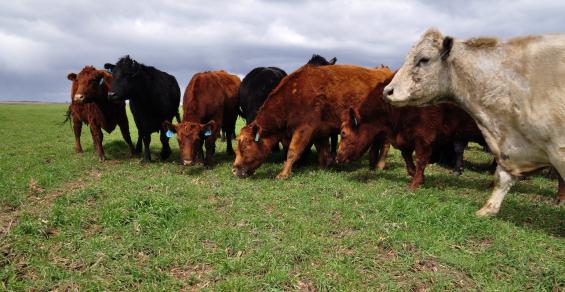Using cover crops as forage provides another benefit, according to studies from two Midsouth universities.
For many producers the attraction of cover crops is tied to incentives like subsidies and cost-share programs. Virginia Sykes, assistant professor with the Department of Plant Sciences, University of Tennessee Institute of Agriculture, will be the first to acknowledge this. She also understands that growers want to see increased value from a cover crop program.
“As adoption increases and subsidies are reduced over time, we need to show the economic benefits of cover crops aside from current programs,” Sykes said.
“One way to get value from cover crops beyond the ecological benefits over time is to harvest them as forage,” she added.
Sykes is leading research that compares the economic and environmental benefits of cover crops when used both as cover and forage to traditional cover crop usage. The study evaluated 16 cover crop species following a corn and soybean crop, respectively.
The research team collected soil samples and evaluated ground coverage growth throughout the trials to determine if harvesting forage from the cover crops impacted benefits such as soil moisture and nutrient retention. They also monitored weed and insect pressure to see if removing the growth affected pest management needs.
“We saw no reduction in ecological benefits to the soil under the dual-use system,” Sykes reported. “Perhaps over a longer period of time, organic matter would accumulate more slowly, but the root mass from dual-use cover crops provided the soil health and nutrient management benefits expected.”
Soybean yield and quality was consistent in both cover crop systems. In addition, they saw no change in weed suppression in the following crop, whether the cover species was harvested for forage or not. Nor did insect or slug populations vary.
“Dual-use cover crop plots also produced high-quality forage,” she said. “The dual-use option appears to offer the best of both worlds, offering further economic incentive to cover cropping.”
Midsouth cover crop forage
Limited information is available about the suitability of specific cover crop species as both cover and forage in the Midsouth. But as interest in cover crops (or cover crop subsidy programs) continues to grow throughout the region, more researchers are looking to answer these questions.
In the spring of 2022, Mississippi State University released results from a two-year study that analyzed different cover crops species integrated within a livestock grazing system. The three cover trials were oats, an oats + crimson clover mix, and an oats + crimson clover + radish mix.
Rather than tilling to prepare for spring planting, the team had cattle graze cover crops planted behind the cash crop. This no-till/grazing approach provided dequate forage nutrition values, adequate weight gains in cattle without supplementation, and increased soil organic matter.
Brett Rushing, Mississippi State University associate Extension and research professor in plant and soil sciences, led the study.
“Our tilled soils were under one percent of organic matter, where our grazed areas were at one and a half percent,” Rushing said. “We are definitely starting to see how grazing benefits organic matter, and with the South’s environmental conditions, increase in organic matter by half of a percent in two years is pretty significant.”
Josh Maples, MSU assistant professor in agricultural economics, oversaw the economics of the project.
“We approached this research by focusing on the impact the cover crops had on the row crops themselves, and we studied the impact that the crops had on animal weight and then measured the productivity we had for all those systems,” Maples said.
After the preliminary data analysis, Maples said the “oats only” cover crop treatment was the most economically beneficial.
The team began a new, but similar project this season that will evaluate cover crop biomass and nutritive value, animal performance, soybean yield, soil health and overall economics using cereal rye as a dual-use cover.
System-dependent
In her study, Sykes found that the performance of cover crops as forage was largely dependent on crop rotation.
“The cover crop plots following a corn crop that was rotating to soybeans grew at least six weeks longer than the plots following soybeans rotating to corn,” Sykes reports. “Because of that, we found more options that work better as forage on corn ground rotating to soybeans.”
The shorter growing season of a soybean-to-corn rotation resulted in low yields that likely would not be well-suited to grazing or forage production. Cereal species — wheat, oat, triticale and cereal rye — along with hairy vetch, were the only cover crops to provide significant biomass in a soybean to corn rotation.
Nitrogen from cover crop biomass differed significantly by species within the longer growing season provided by the corn to soybean rotation, indicating a possible reduction in early-season nitrogen from removing forage biomass. There was no significant difference in nitrogen between species in the shorter growing season provided by the soybean to corn rotation.
Legumes provided the greatest nitrogen credit. Cereals provided the greatest forage yield, but they left the smallest nitrogen credit or even a nitrogen deficit for the following crop. Regardless of system, all species provided adequate nutritive values for feed use.



